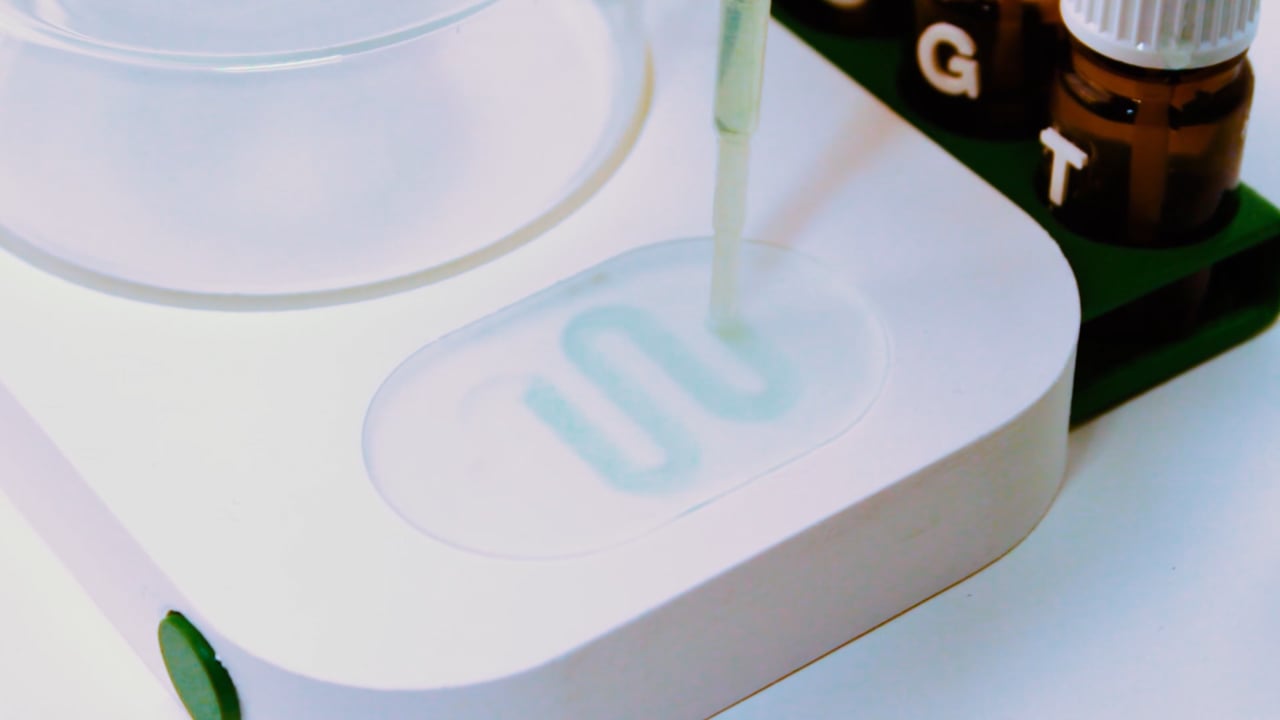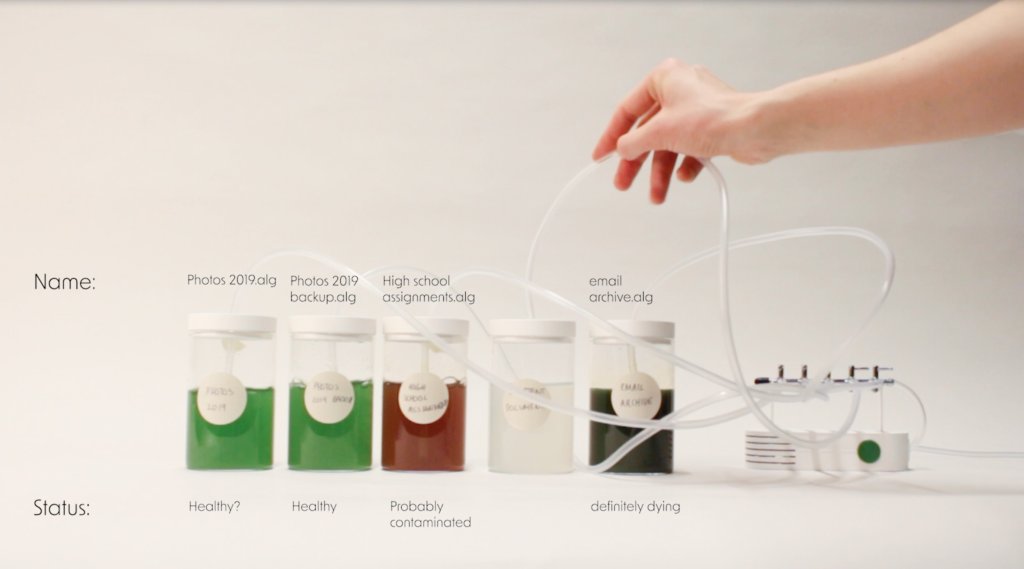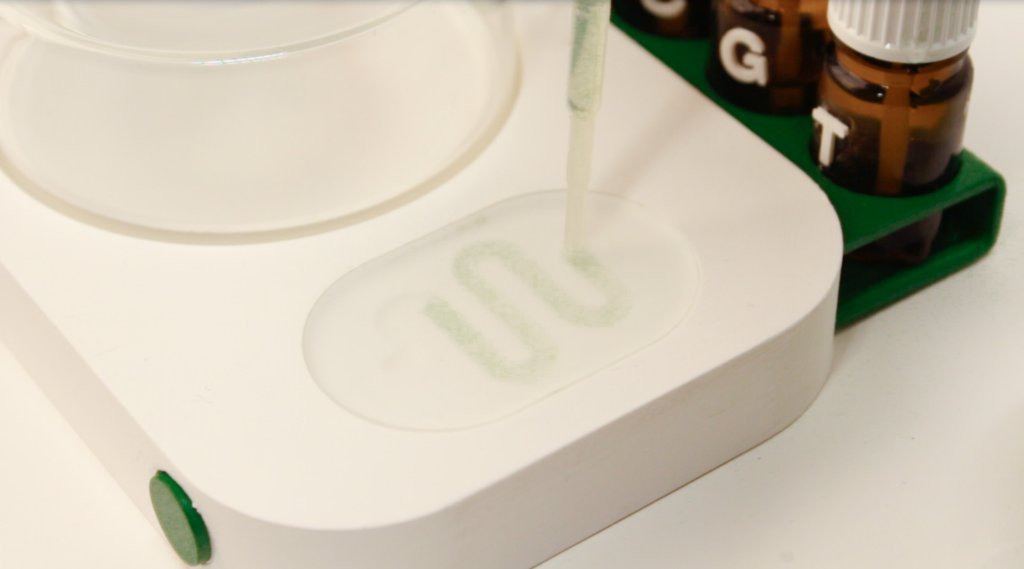Can we store data as a breathing, living culture?
In complex and distributed human-made-systems, the intimate co-dependency between humans and non-humans can feel distant and vague. A novel approach for fostering a sense of mutual care between people and living organisms can be found within biodesign, where living artefacts provide human users with functional benefits, like lighting, air purification and unique material qualities in exchange for care.
https://www.4tu.nl/du/projects/algae-cloud/

Emerging bio-technologies bring new opportunities for mutualistic care. Using speculative design as a tool, we explored how storing data in microalgae might facilitate mutualistic care, and how this might implicate care. “Algae Cloud,” imagines a personal cloud-storing system as a series of algae cultures; a relation of mutualistic care where data storage is traded for sunlight, nutrients, and regular attention.

We started with the intention of making something that combined digital technologies and living organisms to give people a sense of interspecies empathy. It became apparent that people’s relations to living organisms and ecosystems around them are deeply connected to everyday practices. We looked at practices that could instil a sense of dependency between people and living organisms through emerging biotechnologies, and DNA data storage in living organisms was further investigated.
A new concern arose by making speculations meant to help people imagine opportunities for care with DNA data storage in trees. However, people also started talking about how they relate to data storage. We therefore addressed current anthropocentric relationships with data storage as a ‘careless’ practice. After choosing spirulina and iterating on a speculative scenario, we developed Algae Cloud as a speculative research artefact to inspire new opportunities around mutualistic care between people, algae and data.

Algae Cloud aims to spark reflection on human-non-human relationships with living organisms and data storage. On the one hand, how might a human-centric motivation, like storing data, influence how we care for and pay attention to living organisms like algae? And how might treating data storage as something that’s alive and needing care challenge the anthropocentric notion of data storage as weightless, immortal and safe – up there in a cloud?
Maker

